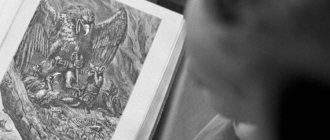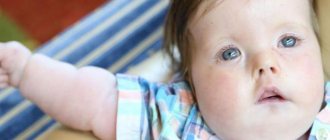Cerebral palsy has a hyperkinetic form - a disease in which the nervous system is affected, muscle tone is impaired, and speech disorders are observed. At birth, babies have a number of reflexes that should disappear as they grow older (up to about 2 months). But, if the child begins to hold his head later than expected, does not roll over, does not follow objects well, or inactively sucks the breast, the alarm should be sounded. Such a child may develop cerebral palsy (CP).
Causes of hyperkinesis in children
The list of conditions that can provoke hyperkinetic behavior disorder in children is quite extensive. The most common causes of the development of pathology are:
- congenital anomalies of the central nervous system;
- various conditions that led to damage to the central nervous system, including birth injuries;
- acute intoxications caused by drugs, chemical compounds, and some endocrine pathologies;
- infectious diseases affecting the central nervous system or brain tissue (meningitis, encephalitis);
- excessive stress on the child’s psyche (stress, neuroses, increased childhood anxiety).
In some cases, the impetus for the development of pathology may be an unstable situation in the family, any difficult emotional experiences, or fears that increase the load on the limbic system of the brain and cause involuntary movements.
Why does this pathology occur?
The hyperkinetic form of cerebral palsy, the causes of which are varied, occurs as a result of the influence of perinatal and prenatal factors on the child.
- Hypoxia during pregnancy. When the fetus does not receive enough oxygen for a long time, its nervous system cannot fully develop; its already formed nerve cells begin to die.
- The impact of toxins on the body of a pregnant woman. Toxic substances modify the cells of the fetus, and abnormalities occur in its brain (they can similarly affect other organs).
- Fetal infection. Infections that penetrate the placental barrier, like toxins, can affect nerve cells.
- Metabolic disorders in the fetus. They provoke nutritional deficiency, as a result of which the growth and development of the baby slows down.
- Rhesus conflict between mother and child.
- Birth injuries.
Cerebral palsy (a hyperkinetic form of the disease) is observed in full-term babies who have normal body weight or its deficiency at birth, as well as in premature infants.
Classification of the disease
The main classification divides hyperkinesis into two large groups depending on the nature of changes in muscle tone.
- Hypotonic conditions, characterized by rapid movements: tics, chorea, tremors of the limbs, involuntary muscle contractions.
- Dystonic (slow) conditions, which manifest themselves in spasmodic closing of the eyelids, torticollis, unconscious flexion and extension of the fingers and toes.
Due to the origin, the pathology can also be primary, which is caused by congenital abnormalities in the development of the central nervous system or heredity, and secondary, when hyperkinesis was a consequence of an injury or disease.
Features and types of cerebral palsy
Depending on the severity of damage to the NS, the child experiences:
- general or partial paralysis;
- muscle weakness;
- inconsistency of movements;
- epileptic seizures;
- mental retardation, difficulty in perception and learning;
- problems with vision, hearing and speech;
- strabismus.
In this case, deviations in children can be either mild, almost imperceptible, or extremely severe. The combination of these combinations is individual and depends on how severely the central nervous system is affected.
Cerebral palsy can be of several types:
- Spastic diplegia.
- Hemiplegia.
- Double hemiplegia.
- Cerebral palsy, atonic-astatic form.
- Hyperkinetic form.
Symptoms of hyperkinetic disorder in children
It is quite difficult to suspect the disease in infancy; the main manifestations of the disease occur in the preschool periods of adolescence: at 3 years and 6–7 years. Parents may notice various involuntary motor acts, which include:
- teeth grinding (bruxism);
- guttural cough;
- rhythmic rocking of the body or head;
- nail biting.
The most pronounced symptom of childhood hyperkinetic disorders remains tics - involuntary contractions of the muscles of the neck, face, and shoulder girdle. In some cases, the twitching is accompanied by sound signals (vocalisms): laughter, screams, hiccups, coughing. Tics intensify if the child is worried, worried, is in an unfamiliar environment or meets new people.
Other signs of the disorder may include:
- chorea - erratic, excessive body movements, reminiscent of a chaotic dance;
- tremor of the hands, feet, chin, tongue;
- torticollis - a condition in which the child’s head takes an unnatural position with persistent rotation and tilt;
- hemiballismus – sharp, “throwing” movements that occur suddenly and predominantly on one side of the body.
In some cases, specific symptoms include stuttering, nocturnal enuresis, sleep and awakening disorders, and fear of sharp sounds and bright lights.
Hyperkinetic disorder is sometimes accompanied by increased impulsivity, the inability to do one thing for a long time, impaired concentration and attention, which is also characteristic of ADHD. In some cases, the opposite reaction is observed: a child with hyperkinesis prefers solitude, silence, calm, thoughtful activities.
Characteristic manifestations and disorders
Approximately 25% of babies have a hyperkinetic form of cerebral palsy, in which the subcortical formations are predominantly affected due to Rh conflict during pregnancy. This form is characterized by pronounced disturbances of tone. Mental development does not suffer as much as with other forms of paralysis. But disturbances in muscle tone lead to speech disorders.
This type appears:
- convulsions in the form of athetosis, chorea or myoclonus;
- violation of muscle tone;
- speech delay and impairment.
Depending on the extent of the damage, symptoms appear in infancy or around 2 years. Involuntary muscle contractions can be localized in the distal parts of the arms and legs, facial muscles, neck and torso muscles.
A newborn child has decreased tone, limited spontaneous movements, impaired swallowing reflexes, impaired coordination of sucking, swallowing, breathing, and lethargy. When the child is lifted, he takes the form of a running dog, his head is thrown back, and his arms and legs are pressed to his body. He involuntarily pulls his legs towards his tummy.
At 2 months of age, the hyperkinetic form of cerebral palsy changes the overall picture. Muscle tone suddenly increases during movements. This manifests itself in the form of dystonic attacks during movements (sharp extension of the head), emotional outbursts, and a peculiar reaction to light and loud sound. In severe attacks, there is a sudden extension of the entire body with turning and throwing back the head, which is accompanied by a sharp cry. This is often accompanied by sweating, redness of the skin, and tachycardia.
With age, hyperkinesis is more pronounced. Basically, convulsive worm-shaped (occur simultaneously in extensors and flexors) movements of the arms and legs are slow. The child takes unnatural poses. At rest, paralysis does not appear. Appears mainly against a background of increased emotionality, while standing or lying on your back. Spoken speech is slurred, slow, and accompanied by a grimace on the face. Emotions can manifest themselves in uncoordinated, sweeping, jerky movements. Lack of correct positioning of the torso and limbs and hypermobility lead to frequent subluxations of the shoulder, hip and craniofacial joints.
In a supine position, muscle tone is weak, without spontaneous movements. The asymmetric tonic reflex is characterized by the fact that the child assumes a fencer's pose, since flexion and extension of the arms are not combined. This makes it difficult to grab the toy, turn on its side and stomach. Since the head is mostly turned to one side, torticollis develops. In the future, it is difficult for such a child to crawl due to poor coordination in space and to fix his gaze on stationary and moving objects. The field of view is small. It is characteristic that simultaneous bending and extension of the legs is difficult.
When trying to place the child in an upright position, severe tension occurs in the long spinal muscles and neck muscles. The head tilts back sharply and remains in this position for a long time. The child cannot lift his head from this position on his own.
Epileptic seizures in the hyperkinetic form are extremely rare. In most cases, there is difficulty speaking.
Over time, based on the characteristic signs of paralysis, previously absent symptoms appear. This is associated with pathology of brain development. If spastic symptoms appear against the background of hyperkinetic activity, then the disease is diagnosed as a spastic-hyperkinetic form of cerebral palsy.
Diagnosis of the disease
Recognition and treatment of hyperkinetic behavior disorder in children requires a comprehensive approach. The diagnosis is made based on a number of studies, which include:
- determination of neurological and psychological status using various techniques;
- assessment of the child’s medical history, environment, environment and living conditions;
- consultation with an ophthalmologist, psychiatrist, geneticist;
- electroneurophysiological examination;
- magnetic resonance or computed tomography of the brain;
- complex of laboratory tests.
The main task at the diagnostic stage is not only to identify the characteristic signs of hyperkinesis, but also to exclude other pathologies that may give a similar clinical picture, for example, epilepsy, Schilder-Addison syndrome.
Forms of cerebral palsy
In Russia, the classification of cerebral palsy according to K. A. Semenova (1973) is often used. Currently, the following classification is used according to ICD-10:
Spastic tetraplegia
(If movement disorders in the hands are more severe, the clarifying term “bilateral hemiplegia” can be used)
One of the most severe forms of cerebral palsy, which is a consequence of abnormalities in brain development, intrauterine infections and perinatal hypoxia with diffuse damage to the cerebral hemispheres. In premature infants, the main cause of perinatal hypoxia is selective neuronal necrosis and periventricular leukomalacia; in full-term infants - selective or diffuse necrosis of neurons and parasagittal brain damage during intrauterine chronic hypoxia. Clinically diagnosed are spastic quadriplegia (quadriparesis; a more appropriate term compared to tetraplegia, since noticeable impairments are detected approximately equally in all four limbs), pseudobulbar syndrome, visual impairment, cognitive and speech impairment. 50% of children experience epileptic seizures. This form is characterized by the early formation of contractures, deformations of the trunk and limbs. In almost half of the cases, movement disorders are accompanied by pathology of the cranial nerves: strabismus, atrophy of the optic nerves, hearing impairment, and pseudobulbar disorders. Quite often, microcephaly is noted in children, which, of course, is secondary. Severe motor defects of the hands and lack of motivation exclude self-care and simple work activities.
Spastic diplegia
(“Tetraparesis with spasticity in the legs”, by Michaelis)
The most common type of cerebral palsy (3/4 of all spastic forms), previously also known as “Little’s disease.” The function of the muscles on both sides is impaired, more so in the legs than in the arms and face. Spastic diplegia is characterized by the early formation of contractures, deformities of the spine and joints. It is mainly diagnosed in children born prematurely (consequences of intraventricular hemorrhages, periventricular leukomalacia, and other factors). In this case, in contrast to spastic quadriplegia, the posterior and, less often, middle sections of the white matter are more affected. With this form, tetraplegia (tetraparesis) is usually observed, with muscle spasticity noticeably predominant in the legs. The most common manifestations are delayed mental and speech development, the presence of elements of pseudobulbar syndrome, dysarthria, etc. Pathology of the cranial nerves is common: convergent strabismus, atrophy of the optic nerves, hearing impairment, speech impairment in the form of delayed development, moderate decline in intelligence, including those caused by the influence of the environment on the child (insults, segregation). The prognosis for motor abilities is less favorable than for hemiparesis. This form is the most favorable with regard to the possibilities of social adaptation. The degree of social adaptation can reach the level of healthy people with normal mental development and good hand function.
Hemiplegic form
Characterized by unilateral spastic hemiparesis. The arm usually suffers more than the leg. The cause in premature infants is periventricular (periventricular) hemorrhagic infarction (usually unilateral), and congenital cerebral anomaly (for example, schizencephaly), ischemic infarction or intracerebral hemorrhage in one of the hemispheres (usually in the basin of the left middle cerebral artery) in full-term infants. Children with hemiparesis master age-related skills later than healthy ones. Therefore, the level of social adaptation, as a rule, is determined not by the degree of motor defect, but by the intellectual capabilities of the child. Clinically characterized by the development of spastic hemiparesis (Wernicke-Mann type gait, but without leg circumduction), delayed mental and speech development. Sometimes it manifests itself as monoparesis. With this form, focal epileptic seizures often occur.
Dyskinetic form
(the term “hyperkinetic form” is also used)
One of the most common causes of this form is hemolytic disease of the newborn, which was accompanied by the development of nuclear jaundice. Also the cause is status marmoratus of the basal ganglia in full-term children. With this form, as a rule, the structures of the extrapyramidal system and the auditory analyzer are damaged. The clinical picture is characterized by the presence of hyperkinesis: athetosis, choreoathetosis, torsion dystonia (in children in the first months of life - dystonic attacks), dysarthria, oculomotor disorders, hearing loss. It is characterized by involuntary movements (hyperkinesis), increased muscle tone, which may simultaneously cause paralysis and paresis. Speech disorders are observed more often in the form of hyperkinetic dysarthria. Intelligence develops generally satisfactorily. There is no correct alignment of the torso and limbs. Most children experience preservation of intellectual functions, which has a favorable prognosis for social adaptation and learning. Children with good intelligence graduate from school, secondary specialized and higher educational institutions, and adapt to certain work activities. There are athetoid and dystonic (with the development of chorea and torsion spasms) variants of this form of cerebral palsy.
Ataxic form
(earlier the term “atonic-astatic form” was also used)
It is characterized by low muscle tone, ataxia and high tendon and periosteal reflexes. Speech disorders in the form of cerebellar or pseudobulbar dysarthria are common. It is observed with predominant damage to the cerebellum, fronto-pontine-cerebellar tract and, probably, the frontal lobes due to birth trauma, hypoxic-ischemic factor or congenital malformation. Clinically characterized by a classic symptom complex (muscle hypotonia, ataxia) and various symptoms of cerebellar asynergia (dysmetria, intention tremor, dysarthria). With this form of cerebral palsy, a moderate delay in the development of intelligence is emphasized, and in some cases mental retardation occurs in the degree of deep debility or imbecility. More than half of the cases diagnosed with this form are unrecognized early hereditary ataxias.
Mixed forms
Despite the possibility of diffuse damage to all motor systems of the brain (pyramidal, extrapyramidal and cerebellar), the above-mentioned clinical symptom complexes make it possible in the vast majority of cases to diagnose a specific form of cerebral palsy. The last point is important in drawing up a patient’s rehabilitation chart. Often a combination of spastic and dyskinetic (with combined severe damage to the extrapyramidal system) forms is also noted, the presence of hemiplegia against the background of spastic diplegia (with asymmetric cystic foci in the white matter of the brain, as a consequence of periventricular leukomalacia in premature infants).
Unspecified form
Treatment of childhood hyperkinesis
The key condition of therapy is to eliminate the root cause of the disease, after which the symptoms gradually disappear on their own.
Unfortunately, it is not always possible to achieve this goal, and the main treatment measures are symptomatic techniques that improve the child’s quality of life. These include anticonvulsants, which reduce involuntary motor activity of the muscle structure; in some cases, botulinum therapy is used to help block neuromuscular transmission. Auxiliary techniques may include:
- massage;
- physiotherapy;
- physiotherapy;
- water procedures.
Unfortunately, hyperkinetic disorder is often lifelong. An important role in the treatment of hyperkinesis is played by adequate psychological assistance aimed at stabilizing the emotional state of the child and his parents, awareness and acceptance of the disease.
How to help a child with this form of cerebral palsy
Unfortunately, it is impossible to completely cure the disease. There are a number of techniques that can correct the condition of a patient with a hyperkinetic form of cerebral palsy, and the prognosis depends on the severity of the pathology, the individual characteristics of the child’s body, and the presence of concomitant ailments. Help for children with this type of cerebral palsy includes speech therapy and psychological and pedagogical correction. Exercise therapy, physiotherapy, and massage have proven themselves to be effective, as they enhance blood supply and metabolic processes in the affected areas.
The NeuroSpectrum Center for Child Speech Neurology and Rehabilitation helps make life easier for children with cerebral palsy. Our Center’s specialists have extensive experience in treating various forms of the disease and use various advanced corrective techniques.
Prevention
There are no specific agents that can prevent the development of pathology. The following will help reduce the likelihood of your child developing hyperkinetic disorder:
- careful planning and monitoring of pregnancy;
- prevention of household injuries in infancy;
- timely vaccination against diseases affecting the central nervous system;
- maintaining a friendly atmosphere around the child.
With timely detection of pathology and adequate assistance, there is a real chance that by the age of 17–20, the manifestations of hyperkinesis will significantly decrease, giving the child the opportunity to live and develop fully in society.
If your child suffers from hyperkinetic disorder, do not delay a visit to the experienced specialists of the SM-Doctor clinic. At your service are comprehensive methods for diagnosing and treating disorders, assistance from experienced psychologists and neurologists, group and individual recovery programs.
What triggers the development of cerebral palsy?
The factors causing the disease are different. The most common of them:
- Brain injury before, during or immediately after childbirth. Most often, trauma occurs during childbirth when the mother’s body is unable to properly develop labor (quick or too long labor, cesarean section). If a child is born with a bluish marbled body, cyanotic asphyxial lips, and often entwined with an umbilical cord, this indicates brain hypoxia.
- Previous infectious diseases (rubella, jaundice), vaccinations during illness cause postpartum damage to areas of the brain.
- Rhesus conflict of parents. Conflict between mother and fetus blood groups.
- Early placental rejection.
The neural tube and brain tracts of the fetus are formed in the first weeks of pregnancy, and by the end of the first trimester motor reflexes appear. About 50 factors influence the formation of a child’s body and can lead to diffuse brain damage. Therefore, a woman should take care of the health of her child long before conception: undergo an examination, give up bad habits and the use of alcohol, narcotic drugs, and unnecessary use of medications, especially hormonal, sedative, and psychotropic ones.
During pregnancy, it is necessary to constantly be monitored by an obstetrician-gynecologist and come for consultations in a timely manner, especially if there are chronic diseases of the endocrine and cardiovascular systems, or toxicosis.
Take preventive measures to prevent the occurrence of inflammatory processes of viral and bacterial infections. Particular attention should be paid to the diet. The mental and emotional state during pregnancy is also important.







